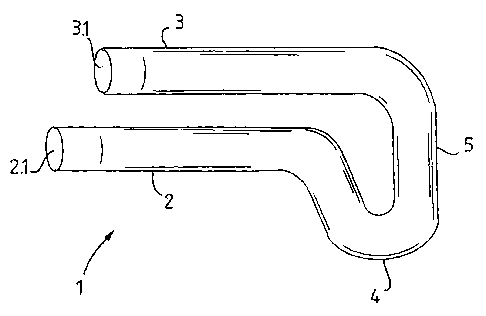Some of the information on this Web page has been provided by external sources. The Government of Canada is not responsible for the accuracy, reliability or currency of the information supplied by external sources. Users wishing to rely upon this information should consult directly with the source of the information. Content provided by external sources is not subject to official languages, privacy and accessibility requirements.
Any discrepancies in the text and image of the Claims and Abstract are due to differing posting times. Text of the Claims and Abstract are posted:
| (12) Patent Application: | (11) CA 2391057 |
|---|---|
| (54) English Title: | RAILWAY FASTENING CLIP |
| (54) French Title: | ATTACHE DE FIXATION DE VOIE FERREE |
| Status: | Deemed Abandoned and Beyond the Period of Reinstatement - Pending Response to Notice of Disregarded Communication |
| (51) International Patent Classification (IPC): |
|
|---|---|
| (72) Inventors : |
|
| (73) Owners : |
|
| (71) Applicants : |
|
| (74) Agent: | LAVERY, DE BILLY, LLP |
| (74) Associate agent: | |
| (45) Issued: | |
| (86) PCT Filing Date: | 2000-11-10 |
| (87) Open to Public Inspection: | 2001-05-17 |
| Availability of licence: | N/A |
| Dedicated to the Public: | N/A |
| (25) Language of filing: | English |
| Patent Cooperation Treaty (PCT): | Yes |
|---|---|
| (86) PCT Filing Number: | PCT/ZA2000/000212 |
| (87) International Publication Number: | ZA2000000212 |
| (85) National Entry: | 2002-05-09 |
| (30) Application Priority Data: | ||||||
|---|---|---|---|---|---|---|
|
A railway fastening clip for securing a rail comprises an elongate member (1),
formed so as to consist of a first longitudinal leg (2), and a second
longitudinal leg (3), the legs being resiliently connected at one end of the
member, and an ear formation (4) extending transversely beyond the first leg.
L'invention concerne une attache de fixation de voie ferrée servant à fixer un rail, qui comporte un élément (1) allongé, formé de manière à comporter une première branche (2) longitudinale; une deuxième branche (3) longitudinale, les branches étant connectées de manière résiliente à une extrémité de l'élément; et une structure (4) en forme d'oreille s'étendant transversalement au-delà de la première branche.
Note: Claims are shown in the official language in which they were submitted.
Note: Descriptions are shown in the official language in which they were submitted.

2024-08-01:As part of the Next Generation Patents (NGP) transition, the Canadian Patents Database (CPD) now contains a more detailed Event History, which replicates the Event Log of our new back-office solution.
Please note that "Inactive:" events refers to events no longer in use in our new back-office solution.
For a clearer understanding of the status of the application/patent presented on this page, the site Disclaimer , as well as the definitions for Patent , Event History , Maintenance Fee and Payment History should be consulted.
| Description | Date |
|---|---|
| Application Not Reinstated by Deadline | 2005-11-10 |
| Time Limit for Reversal Expired | 2005-11-10 |
| Deemed Abandoned - Failure to Respond to Maintenance Fee Notice | 2004-11-10 |
| Letter Sent | 2004-05-27 |
| Reinstatement Requirements Deemed Compliant for All Abandonment Reasons | 2004-05-17 |
| Deemed Abandoned - Failure to Respond to Maintenance Fee Notice | 2003-11-10 |
| Letter Sent | 2002-11-07 |
| Inactive: Cover page published | 2002-10-29 |
| Inactive: Notice - National entry - No RFE | 2002-10-18 |
| Application Received - PCT | 2002-08-06 |
| Inactive: Single transfer | 2002-08-01 |
| National Entry Requirements Determined Compliant | 2002-05-09 |
| National Entry Requirements Determined Compliant | 2002-05-09 |
| Application Published (Open to Public Inspection) | 2001-05-17 |
| Abandonment Date | Reason | Reinstatement Date |
|---|---|---|
| 2004-11-10 | ||
| 2003-11-10 |
The last payment was received on 2004-05-17
Note : If the full payment has not been received on or before the date indicated, a further fee may be required which may be one of the following
Patent fees are adjusted on the 1st of January every year. The amounts above are the current amounts if received by December 31 of the current year.
Please refer to the CIPO
Patent Fees
web page to see all current fee amounts.
| Fee Type | Anniversary Year | Due Date | Paid Date |
|---|---|---|---|
| Basic national fee - small | 2002-05-09 | ||
| Registration of a document | 2002-08-01 | ||
| MF (application, 2nd anniv.) - small | 02 | 2002-11-12 | 2002-11-05 |
| Reinstatement | 2004-05-17 | ||
| MF (application, 3rd anniv.) - small | 03 | 2003-11-10 | 2004-05-17 |
Note: Records showing the ownership history in alphabetical order.
| Current Owners on Record |
|---|
| MATTHYS, PRETORIUS STRYDOM |
| Past Owners on Record |
|---|
| ANDRE CORNELIUS WEBER |
| MARIUS SIGFRIED STRYDOM |